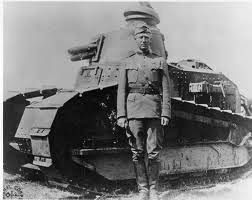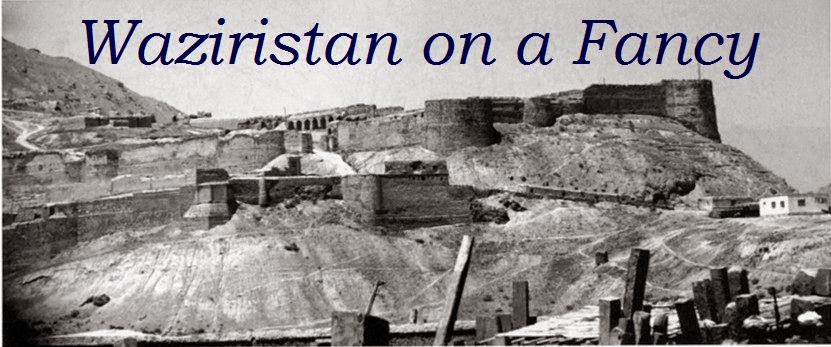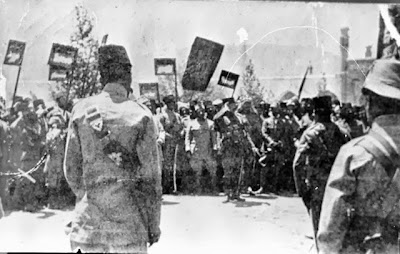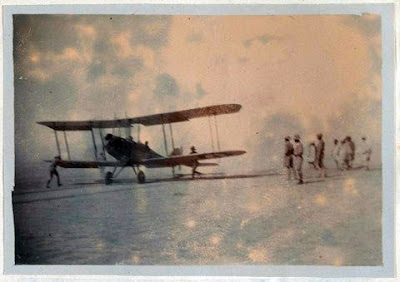This picture has interested me a lot since the first time I saw it in an old book:
Literally: "The first tank ever knocked out by Afghans - in 1919! This Renault FT17 was used by the British Tank Corps in the Third Anglo-Afghan War and was outside the fortress of Spin Baldak, held by Kabul regime forces until 1988".
Interesting, really interesting...
There are a lot of remnants of many countries that lay, ruined, in the Afghan landscape, on the side of the roads or "decorating" various junkyards, as this picture from the KMTC in Kabul shows (and it is only a very, very, very small portion of that junkyard):
And this one:
Very dangerous, but also a treasure of military history.
Well, about the history of this tank:
During operations in Afghanistan in 2003, Major Robert Redding, an US Special Forces serviceman, found the rusted remnants of two WWI era Renault FT17, tattered and disassembled, while visiting an Afghan scrap yard in Kabul. Redding sent digital images of the tanks to the Patton Museum of Cavalry and Armor in Fort Knox, Ky, asking if the Museum would be interested in acquiring them. That was Friday, and by Monday he had seven enthusiastic responses.
The Museum was very interested in bring the tanks back to the States because, in that moment, their previously owned FT17 tank had been sent back to France at the request of the French Government because it was a very rare tank and France was really interested in getting and keeping intact equipment (in fact, France was more interested in finding an engine, because they had already a body of a FT17).
This model of tank has also a great interest for the United States Army because it was the model used by the US forces in the Great War. In fact, George Patton, then a captain serving under General John Pershing, was one of the first to learn how to operate this tank.

There were made about 5,000 FT17, the first one to have a full traverse, 360º rotating turret. It was a light vehicle with a weight of 6,700 kgs, but not fast. It had a two men crew, a driver in the front center of the vehicle and a commander in the small turret. Today, there are probably no more than six or seven of them in existence, like this one owned by Spain, a veteran of the Marruecos Campaings and the Spanish Civil War:

Fort Knox personnel arrived in Kabul in May 2003 to examine the tanks, which were in a relative good shape because of the Afghan dry climate, but they were dirty and missing armament and other components. On the other hand, both tanks still had their original engines, complete tracks and most of their parts. With the tanks found, they had to be sent to the States and the first step was getting permission from Afghanistan, the owner of the vehicles, so Redding went to Afghanistan´s Deputy Minister of Defence, General Abdul Rashid Dostum, also commander of Northern Afghanistan. Fortunately, he was more than willing to concede permission, as a gift for what the United States had done for his country. He allowed one of the tanks to be taken out of Afghanistan, to the
Patton Museum.
With the help of French Major Thierry Delbarre (at right in this picture), the project manager and historians from the 326th Military History Detachment, a reserve unit from Columbus, Ohio, such as Major Charles Boyd (at left in the picture), the best tank was chosen.
A curious history, but were there British tanks?
The idea that it was captured to the British during the Third Afghan War is a pure fantasy; the British Army didn´t have FT17 in its inventory and, certainly, not in India! The curator at Fort Knox that restored the vehicle believed that the Afghan Renaults (there were at least four of them prior 2003) were examples bought by Poland and captured by the Soviet Union during the Polish-Soviet War of 1919. They were then presented to Afghanistan when this country became the first state to officially recognise the Soviet Union under the Afghan-Soviet Treaty of 1921.
Another FT17 tank, this one displayed in Kabul. This could be another one of the Polish tanks captured by the Soviets and re-equipped with a Hotchkiss 37mm naval gun or, perhaps, one of the White Russian Renaults built between 1920-1921 (and also captured by the Reds).
And another one:
This was found in the backyard of the Afghan Ministery of Defence and the Polish diplomatics were so interested in it thatit was finally gave to them as a gift and sent to Poland to be restored and put on exposition.
Finally, I have been able to learn that there were four Renault FT17 given as a gift by the Soviet Union to Afghanistan in 1923. They had been captured in the Battle of Równe, on 5 July 1920... because they had been abandoned by the Polish forces. One of them is now restored in the United Stated, a second one is, also restored, in Poland and a third one is restored and exposed in front of the Ministery of Defense in Kabul.
For me as a Military History enthusiast, it is a great news but for my Third Afghan War project it is not good. I was thinking about to deploy an "Afghan Tank Korps" using a FT17 model in 1/56 scale I have from
FAA Models:
Perhaps for a Fourth Afghan War...























